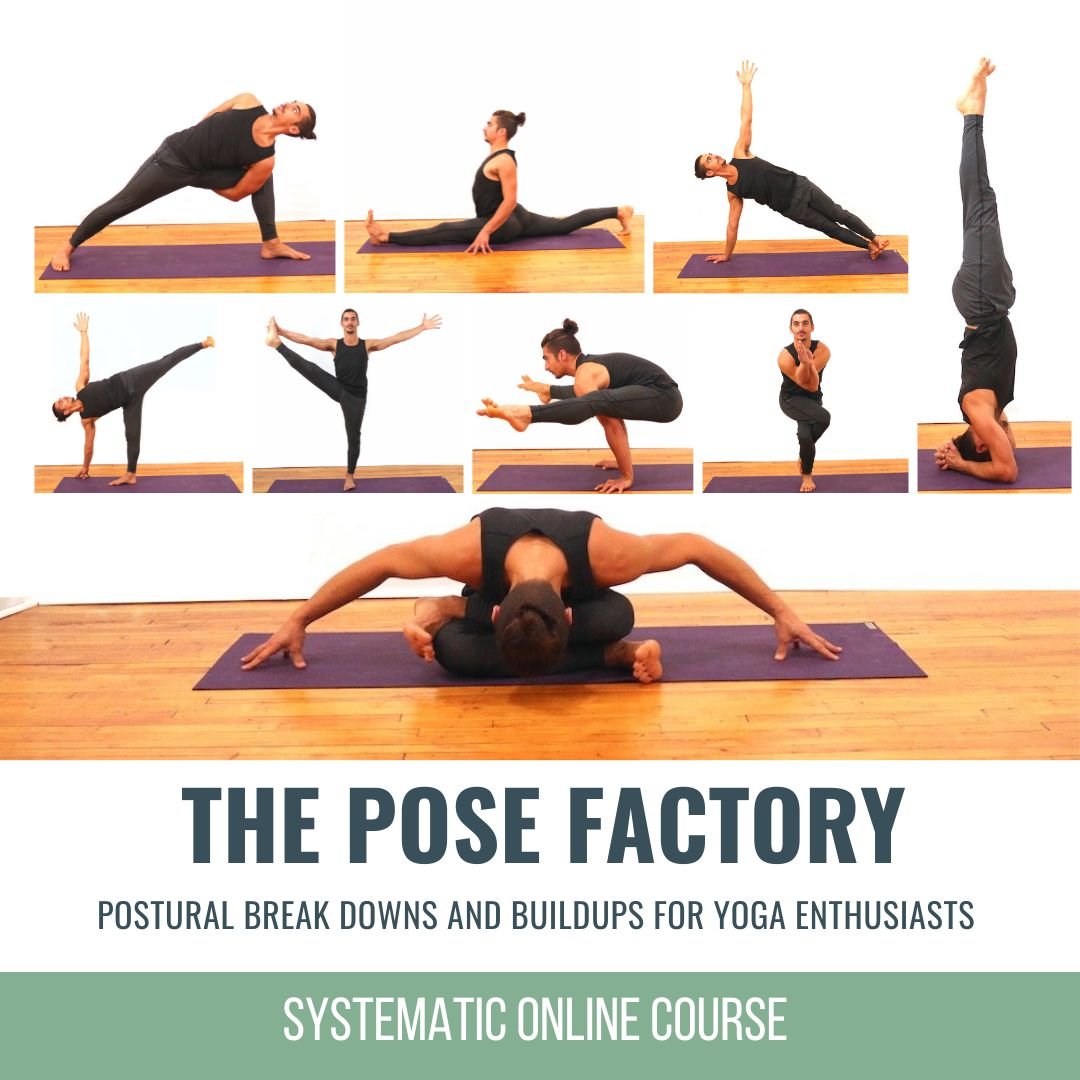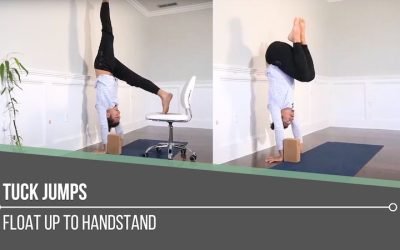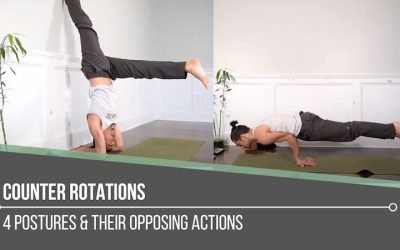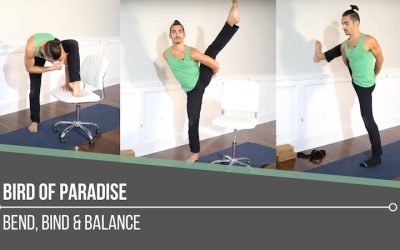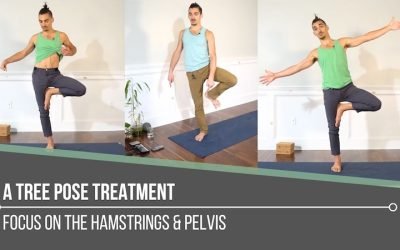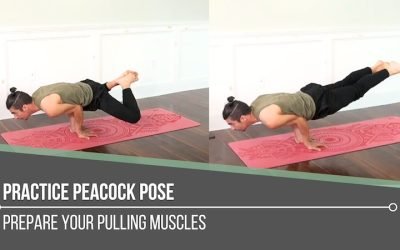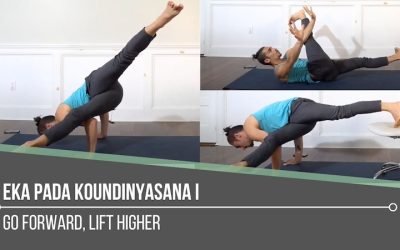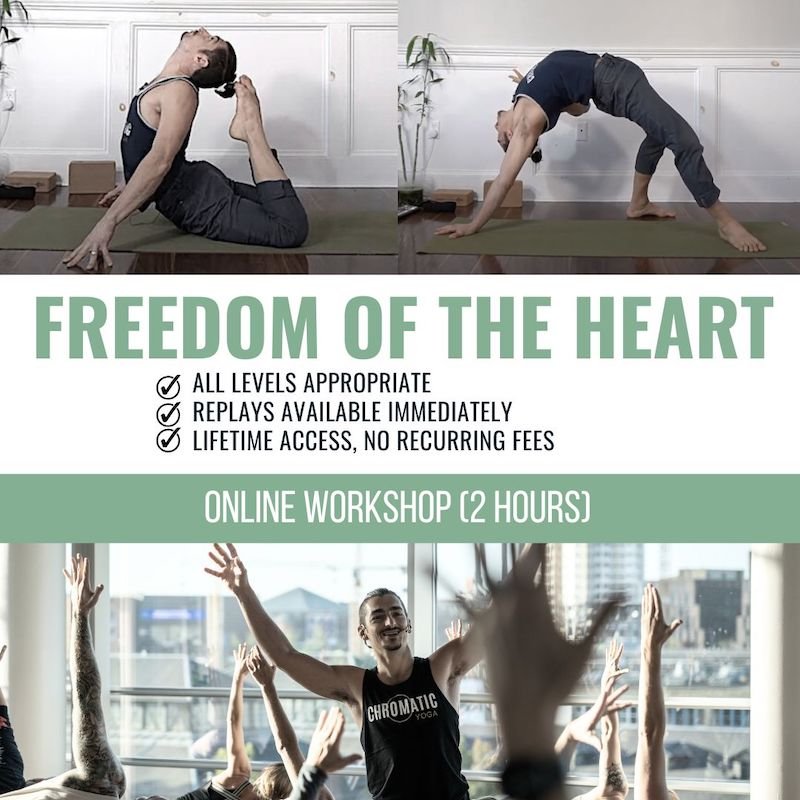Tuck JumpsHandstandTUCK JUMPS Without a doubt, tuck jumps are a confidence booster when it comes to preparing for handstands. When we go through the course of preparation, it’s not the first step, but it’s definitely a way of identifying where strength and...
Chin Stand
Chin Stand
ganda bherundasana
CHIN STAND
Without a doubt, Chin Stand requires preparation. This posture must be approached with the utmost humility, essential in order to respect the potential risk. If this pose is not explored regularly in our physical practice, it may be quite challenging. At the same time, it’s a rewarding journey! Chin Stand requires an exceptional amount of back and upper body strength, along with a generous amount of front body flexibility. That being said, this posture provides us an opportunity to go more deeply into those areas of the body. We can examine what requires development and attention.
Taking that approach covers the physical, but what is often lacking is the mental fortitude to let go of the outcomes and simply delight in the process. We are capable of taking actions to develop while challenging ourselves.
THE POSE FACTORY
WAITLIST NOW OPEN
- Dogmatic alignment versus functional alignment
- Learn popular postural pitfalls
- Myths versus truth
- Formulaic approach for comprehensive learning
- Excellent guide for yoga enthusiasts
- Must-have for yoga teachers
- Joint-health awareness
- Muscle integrity, range of motion
- Props for accessibity
- Alignment alterations in the case of injuries
POSTERIOR CHAIN FOCUS
Establishing a strong base is the key to preparation, especially when approaching a posture like Chin Stand. We need to be confident while progressing through each step on the roadmap towards the pose. As Matt says in today’s video, the posture is “all about the posterior chain.”
While prone on his mat, Matt demonstrates a drill for Chin Stand that strengthens the hamstrings, buttocks, and lower back. The drill is designed to teach us how to isolate the strength of these areas of the body on each side. Exploring in this way provides the opportunity to find where there may be gaps we need to fill in terms of strength. If we notice that it is more challenging on one side, we can devote more time to that particular area.
What also happens is that we begin to play with the shape that’s created in Chin Stand.
WATCH THE VIDEO
CHIN STAND: TAKE FLIGHT FROM THESE FOUNDATIONS
PREPARE YOUR NECK LIKE A BACKBEND
Clearly, the neck muscles are in the spotlight in Chin Stand. Flexibility is required along with strength and stability to reduce the risk of injury.
When stretching the neck, the approach is similar to what we’ve learned about backbends with Matt. In backbends, we first send the rib cage forward. In Chin Stand preparation, Matt demonstrates how to send the chin forward, after creating a support under the occiput (the back part of the skull). We then lift the chin to stretch the muscles in the front of the neck. This mimics the lift of the lower ribs up in order to stretch the abdominals in backbends. One of the last similarities is the exit. Just like in backbends, we take care to maintain the shape we’ve created in the neck while we slowly lower the chin. Keep the jaw closed in order to feel the stretch.
200 HOUR ONLINE TEACHER TRAINING
GET CERTIFIED & DEEPEN YOUR YOGA PRACTICE
- Deepen your yoga practice
- Build confidence speaking in front of groups in person and online
- Learn foundational class structures and templates
- Learn techniques for a wide range of yoga postures
- Get certified and highly qualified to teach yoga
- Yoga Alliance Globally Recognized Certification Program
CHIN STAND VARIATIONS
Matt sets himself up with a wall, yoga blocks, a bolster, and a chair. With these props, he delves into various positions with the legs. He offers “stag” positions with either a foot or a knee on the chair. A knee, he suggests, is far more accessible, but placing the foot on a chair more closely resembles the experience in Chin Stand.
Another variation is placing the arms back behind us. We can still explore the same stag options of the legs with this change in the arms.
Matt emphasizes that one of the key points, as we continue with our quest, is that we use our hand grip along with more of our upper body strength in order to keep the neck safe.
When selecting the option in which we turn away from the wall, we MUST have a partner educated in how to support us.
300 HOUR ONLINE TEACHER TRAINING
GET 500 HOUR CERTIFIED AS A MASTER TEACHER
Master your skill set as a teacher through refined techniques, anatomy, biomechanics, sequencing, philosophy, meditation techniques, theming, yoga business, and much more!
- Get 500 hour certified
- Learn anatomy, biomechanics, asana techniques
- Expand your teaching skills
- Masterful sequencing and verbal delivery
- Learn meditation and breathwork techniques
- Transformative tools: theming, dharma talks, satsang
YOU’RE ALLOWED TO CHEAT
If we do go to the point of doing Chin Stand without any props, we can view “cheating” as part of the humility previously mentioned. Matt discusses rolling the elbows more inward as a way of protecting the shoulder girdle and providing stability. Cheating or not, we are better off keeping safety as our first priority rather than attempting to achieve some “aesthetic.” This is an example of choosing to embrace the process and value our discernment when attempting a posture as complex as this one. It’s not about the outcome as much as it is about the experience and journey. It’s the learning that is most valuable.
Matt’s online course The Pose Factory is the perfect platform to expand our learning. The course offers the keys to creating the foundations we desire in our asana practice. Register today to access the building blocks of maximum potential.
The 200 Hr. Teacher Training: Click Here to See the Next Start Date
The 300 Hr. Advanced Teacher Training: Click Here to See the Next Start Date
Article by Trish Curling
Video Extracted From: Inversion Immersion
ONLINE ANATOMY COURSE
- Accessible, exciting, and easy to learn
- Anatomy and biomechanics for yoga
- Appropriate for both teachers and students
- Learn joint alignment vs pose alignment
- Demystify yoga poses and transitions
- Release aches and pains
- Learn how to avoid common injuries
- Caters to all levels with modifications and props
- 20 hours Continued Education Credits with Yoga Alliance
- 20 hours toward Chromatic Yoga Certification and 300 Hour
- Lifetime access
Continue Learning
Tuck Jumps
Counter Rotations
Counter RotationsStabilityCOUNTER ROTATIONS The isolation of specific articulations in a yoga posture can be tricky to implement when we’re still learning about how our bodies move. When we begin to explore counter rotations, this layer might feel confusing and/or...
Bird Of Paradise
Bird of ParadiseSvarga DvijasanaBIRD OF PARADISE In Bird of Paradise, we’re balancing while binding, which can be quite an undertaking. Preparation for this posture requires shoulder mobility, hip mobility, and a tremendous amount of strength. What we also need to be...
A Tree Pose Treatment
A Tree Pose TreatmentVrksasanaA TREE POSE TREATMENT Tree Pose may appear to be a posture we can just “jump into” because of its “accessibility” from anywhere we might be standing, but it definitely requires more refinement than we might think. A treatment to revive...
Practice Peacock Pose
Practice Peacock PoseMayurasanaPRACTICE PEACOCK POSE We go to our yoga practice for many different reasons at any given time. In our asana practice, we are sometimes seeking softness and ease. At other times, we might be striving for vigour and strength. Peacock Pose...
Eka Pada Koundinyasana I
Eka Pada Koundinyasana IArm BalanceEKA PADA KOUNDINYASANA I If Side Crow is already part of our practice, then Eka Pada Koundinyasana I is like adding on another layer to that posture, because they are quite similar. The added layer is that we extend the top leg...
THE FREE TECHNIQUE PACK
When You Subscribe, You Will Get Instant Access to
- the Technique Pack: 15 yoga pose breakdowns
- exclusive online course discounts
- exclusive blogs and videos

